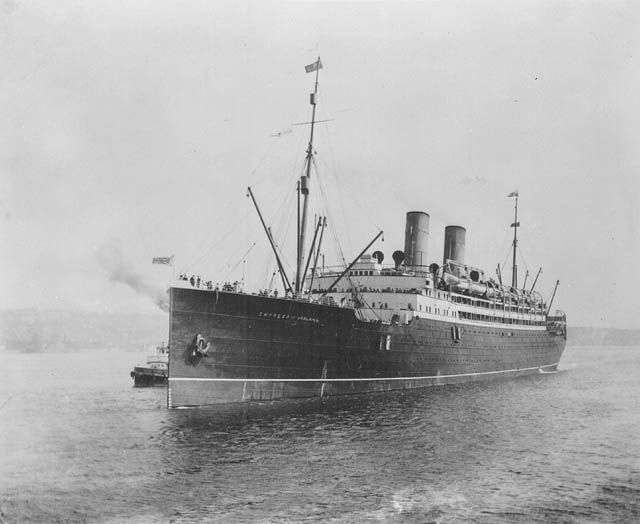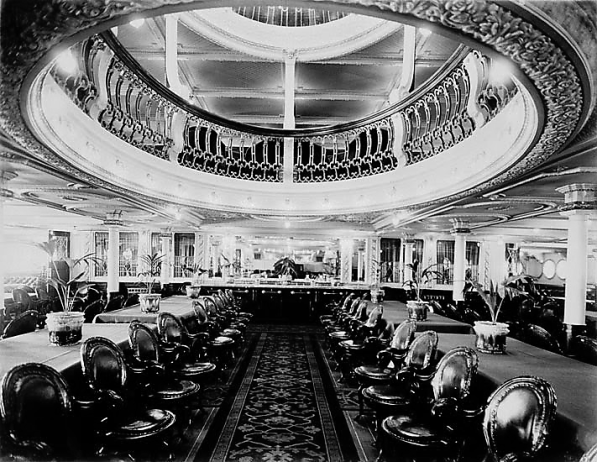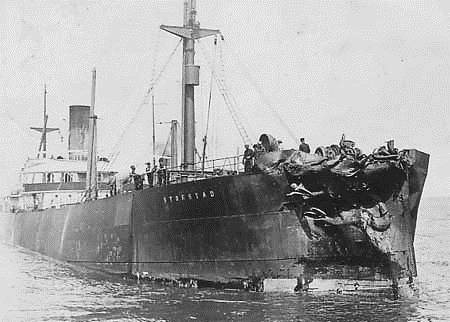The Loss of the Empress of Ireland (28 May 1914)
introduction
The Empress of Ireland was built by Fairfield Shipbuilding and Engineering Company, Gova, Scotland. Her keel was laid on 10 April 1905 under yard number 443. She was launched and christened on 27 January 1906.
The Empress of Ireland was 570 feet long with a beam of 65.72 feet and had a gross tonnage of 14,191.
She had four decks and could carry 1542 passengers; 310 First Class, 468 Second Class, 494 Third Class and 270 Steerage passengers. The construction cost £375,000 and she was commissioned by the Canadian Pacific Steamship Co, part of the Canadian Pacific Railway.

On 29 June 1906, the Empress of Ireland set sail from Liverpool to Montréal on her maiden voyage. She would give good service until 1914.

Collision with SS Storstad and sinking of RMS Empress of Ireland
On 28 May 1914, the Empress of Ireland left Québec city for Liverpool with 1477 passengers and crew. She was under the command of the newly appointed Captain, Henry George Kendall.
At approximately 2 a.m., fog engulfed the ship as she sailed along the St Lawrence River. The Storstad (a Norwegian coal freighter) crashed into the Empress of Ireland causing fatal damage.
The hole in her side enabled the seawater to pour in at an alarming rate.
The Empress of Ireland listed rapidly to starboard. The watertight doors could not be closed so most of the passengers and crew in the lower deck were quickly drowned. The portholes which were open let in more water.
The list became so severe that lifeboats on the port side could not be lowered and it took the ship only 15 minutes to sink.
Before the stern rose in the air for the final time, she lay on her starboard side. 700 passengers were trying to escape the ship through portholes. As the stern rose, survivors were thrown into the freezing water. 1012 people lost their lives.

Inquiry into loss of RMS Empress of Ireland
The Canadian government wanted answers to 20 questions and commissioned an Inquiry which was held on 16 June 1914. Lord Mersey, who had presided over the proceedings of the Titanic Inquiry in 1912 and over the Lusitania Inquiry in 1915, presided over the Inquiry.
The accounts given by the captains and the crew of both ships differed.
The captain of the Empress of Ireland told the commission that he was going to pass the ship starboard to starboard with no risk of collision. He said that the lights on the masthead of the Storstad were visible about four and a half miles away. As the fog rolled in, the captain stopped the engines and blew the ships whistle’s three short blasts which indicated that the ship was stopped and engines were at full speed astern. The fog worsened and the masthead lights disappeared altogether but reappeared when the ship seems only hundred feet away coming in at right angles to them. To avoid collision, the captain ordered full speed ahead but it was too late. Captain Kendall blamed the Storstad. “You sank my ship!” he told the captain of the Storstad when he was on board.
The captain of the Storstad, Captain Thomas Anderson, was not on duty at the time and he was woken by Chief Officer Alfred Toftenes, when the ship was slowed down. Chief Officer Toftenes thought, by the lights being signalled from the Empress of Ireland, that the ships were going to pass port to port. If the ships remained on their courses there would have been no collision. The captain of the Storstad told the commission, that upon arriving on the bridge, the lights from the Empress of Ireland had changed from port to starboard. He ordered full speed astern moments before the two ships collided.
The Commissioners found that the Storstad had changed course during the fog and it was their fault that the collision happened. Subsequently, the Norwegians held their own inquiry and found the responsibility laid with the Empress of Ireland because the protocol of passing port to port was not followed.
The Commission determined there were three factors that led to the quick demise of the Empress of Ireland; the location of the impact, failure to close the watertight doors and the open portholes.
Shortly after the disaster, a salvage operation was carried out to recover $150,000 of silver bullion that the Empress of Ireland was carrying. The salvage team recovered 318 banks of mail and 212 bars of silver. Over the years many dives have been made including one by Dr. Robert Ballard.
In 1999, the wreck site was declared the site of historical and archaeological importance.
